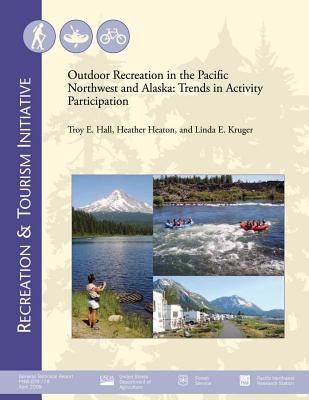
- We will send in 10–14 business days.
- Author: United States Department of Agriculture
- Publisher: CreateSpace Independent Publishing Platform
- Year: 2015
- Pages: 114
- ISBN-10: 1506028772
- ISBN-13: 9781506028774
- Format: 21.6 x 28 x 0.6 cm, softcover
- Language: English
- SAVE -10% with code: EXTRA
Outdoor Recreation in the Pacific Northwest and Alaska (e-book) (used book) | bookbook.eu
Reviews
Description
Population growth in Oregon, Washington, and Alaska is expected to increase demand for outdoor recreation on public land. This trend will be tempered by changes in the sociodemographic composition of the population. Among sociodemographic characteristics, different ages and incomes correspond to different participation rates. Although older Americans are participating more, participation is still lower among this group for active pursuits. Hence, as the population ages, demand for passive activities may increase. Low-income people participate at a much lower rate than higher income people in outdoor recreation, and the growing disparity between the wealthy and poor may create inequities in opportunities for participation. State recreation planning documents for Oregon, Washington, and Alaska have identified this issue as a significant concern for recreation providers. Another important factor in recreation trends in the region is ethnicity: different ethnic groups participate in outdoor recreation at different rates, exhibit some different preferences for specific activities, and use recreation sites in different ways. In Alaska, the number of Asian/Pacific Islanders is expected to quadruple by 2025; in Oregon, the Hispanic population may triple by 2025; and in Washington, both these segments of the population may double.
EXTRA 10 % discount with code: EXTRA
The promotion ends in 18d.05:07:04
The discount code is valid when purchasing from 10 €. Discounts do not stack.
- Author: United States Department of Agriculture
- Publisher: CreateSpace Independent Publishing Platform
- Year: 2015
- Pages: 114
- ISBN-10: 1506028772
- ISBN-13: 9781506028774
- Format: 21.6 x 28 x 0.6 cm, softcover
- Language: English English
Population growth in Oregon, Washington, and Alaska is expected to increase demand for outdoor recreation on public land. This trend will be tempered by changes in the sociodemographic composition of the population. Among sociodemographic characteristics, different ages and incomes correspond to different participation rates. Although older Americans are participating more, participation is still lower among this group for active pursuits. Hence, as the population ages, demand for passive activities may increase. Low-income people participate at a much lower rate than higher income people in outdoor recreation, and the growing disparity between the wealthy and poor may create inequities in opportunities for participation. State recreation planning documents for Oregon, Washington, and Alaska have identified this issue as a significant concern for recreation providers. Another important factor in recreation trends in the region is ethnicity: different ethnic groups participate in outdoor recreation at different rates, exhibit some different preferences for specific activities, and use recreation sites in different ways. In Alaska, the number of Asian/Pacific Islanders is expected to quadruple by 2025; in Oregon, the Hispanic population may triple by 2025; and in Washington, both these segments of the population may double.


Reviews